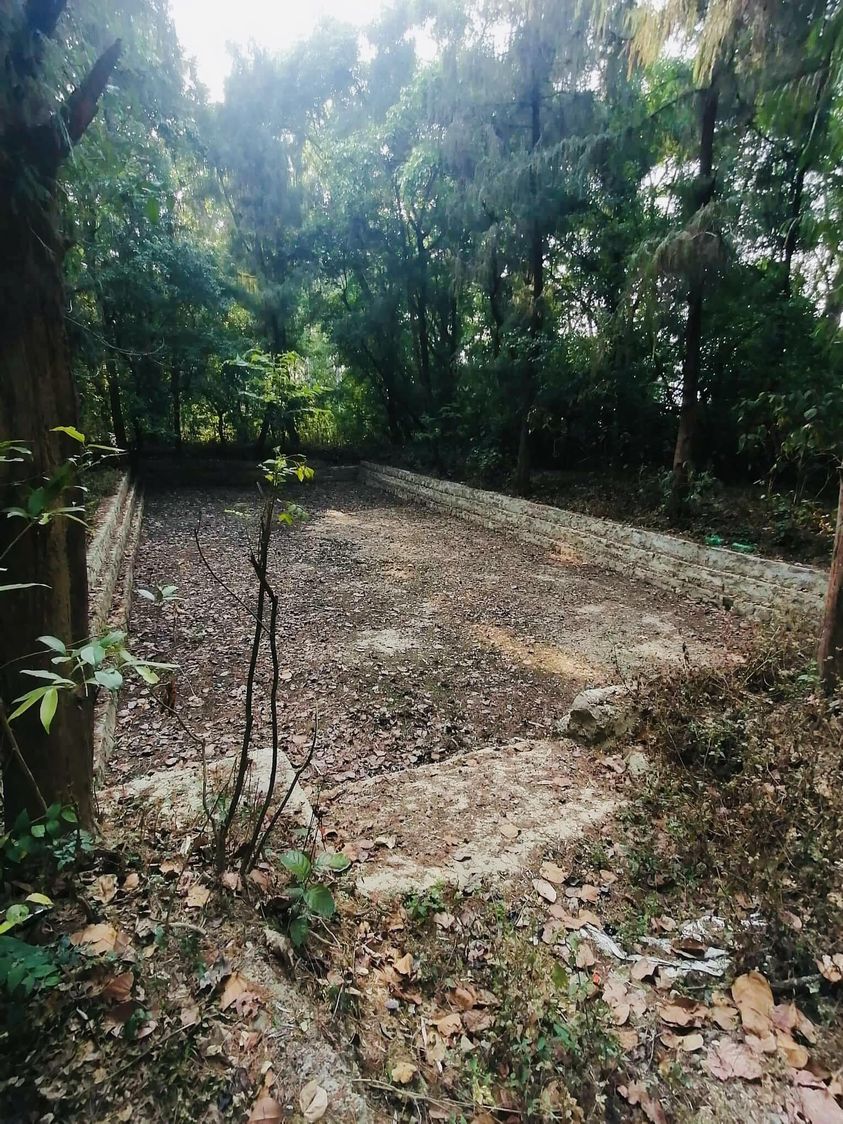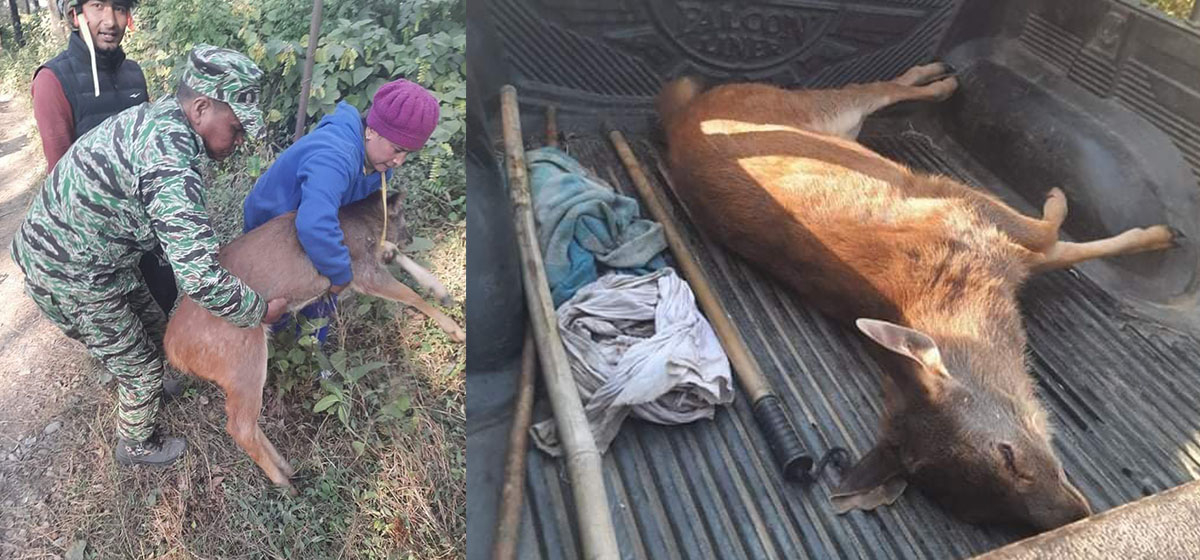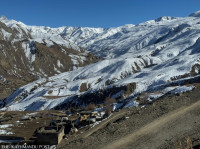Karnali Province
Wildlife from Kakre Vihar forest enter villages in search of water
Drying up of natural sources and poor management of the only manmade pond inside the protected area have led to an increasing number of animals entering human settlements.
Harihar Singh Rathaur
On January 18, an injured deer was rescued from Bulbule lake, about a kilometre from Kakre Vihar protected forest in Birendranagar, the headquarters of Karnali Province.
According to the Division Forest Office, the deer that had entered the nearby settlement in search of water was chased and injured by the locals. A team from the forest office rescued the injured deer alive but could not save it.
“It was in a critical condition and died during the course of treatment,” said Mun Bahadur Rawat, head of the Division Forest Office.
Drying up of natural water sources and poor management of the only manmade pond inside the protected forest area have led to an increasing number of wild animals venturing into human settlements in search of water.
The Division Forest Office last fiscal year constructed a pond at a cost of Rs800,000 for the wildlife inside the forest but neglect in its upkeep has rendered the pond dry.
The Kakre Vihar forest area is spread over 175 hectares. Besides being home to an 800-year-old Buddhist monastery, the forest is also famous for deer sightings.

Sangam Mahat, a local of Birendranagar Municipality-9, says the forest frequented by pilgrims to the monastery and tourists seeking deer sightings has become polluted over the years. This could make the forest inhabitable for wildlife.
“The forest floor and even the pond are littered with plastic,” said Mahat. “The animals come out of the forest in search of water since the only pond inside the forest is drying up and littered with plastic. The locals are wary of encounters with wild animals and chase them away and even injure them.
Around 200 tourists, including domestic and international visitors, visit Kakre Vihar every day, according to Mahat.
The forest is home to various species of deer, rabbits, foxes and birds like peacocks and pheasants, according to the forest office.

According to the forest office’s count last year, more than 50 deer lived in the wild.
Rawat, head of the forest office, said the office’s plan to upgrade the resources in the forest and construct compound walls and fences is on hold due to budget constraints and land ownership issues.
“We have a multi-year plan for the conservation of animals and forest—a master plan to upgrade existing resources, build manpower and construct walls and fences to keep the animals within the forest boundaries,” said Rawal.
“The project was supposed to start under the coordination of the Ministry of Forests and Environment with a Rs210 million budget. But legal issues regarding land ownership have put the plan on hold.”
Rawat says the forest office also lacks personnel to run patrols and check the movement of animals to prevent them from entering human settlements. “There are 23 posts of forest guards but we currently have only 11 guards,” said Rawat. “It’s getting increasingly difficult to monitor the movement of animals to avoid human-animal conflict.”



 12.12°C Kathmandu
12.12°C Kathmandu












